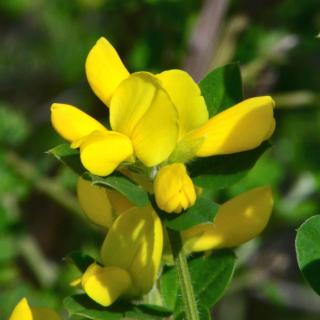

With an incredible attention to detail, our team spot treats individual plants rather than treating an entire area, making sure to factor in environmental conditions such as terrain, proximity to water, soil conditions, and weather. Minimally intrusive methods are those that succeed in removing invasive plants without impacting native species or disrupting the habitat. We use four tried and true methods to target invasive plants: hand pulling, spot-spraying herbicide, spot-mowing, and cut and daub. Here on the Santa Lucia Preserve, the Conservancy practices minimally intrusive methods for maximum effect. There are numerous ways to treat invasive species in natural areas, however, not all methods leave the same mark on the landscape or can be applied everywhere. Photo by Alix Soliman.ĪugBy Jenna Allred, Natural Lands Manager, and Jackson Brooke, Restoration Technician

They welcome volunteers of all ages to their workdays, generally the first Saturday of the month.Natalie Chapman and Jackson Brooke hand pull weeds in the Enchanted Forest. Hilary’s Open Space Preserve in Tiburon over the past 20-plus years. For example, a group called Broom Busters has made a big dent in the French broom population in Old St. There are heroic people all over Marin who are aware of broom’s thuggish behavior and make efforts to remove it. Give consideration to natives since they evolved with local fauna and are the best-adapted plants for our climate. Plants from the other Mediterranean regions of the world do well here.

We have so many other plants available in our amazing part of the world that it’s not hard to find something appropriate to plant. Many retailers have stopped selling brooms, though I see purple cultivars in gardens and have seen purple broom (along with the ubiquitous yellow) on Mount Tamalpais in years past, so despite what the seller might say, it’s best not to buy any broom. Photo by Diane LynchBroom is quite pretty, but its aggressive nature crowds out natives and other more polite plants. But in a few years, you’ll have control and just be pulling an occasional sprout here and there. However, if you choose to remove broom, understand that it’s a multi-year process since seeds can survive for 30 years. Be sure to follow instructions carefully if you opt for an herbicide. You’ll need to monitor the area to make sure the base doesn’t sprout and to remove any seedlings. This method is better than spraying to kill the entire plant, as overspray risks killing other nearby broad-leaf plants. You can also cut large plants down to a stump, but you’ll need to paint an herbicide on the fresh cut. The first year will be the most time-consuming, but the number of plants will rapidly decline in the first few years. Pull small plants in the rainy season before the flowers set seed.

However, Amanda Magallanes, Ring Mountain stewardship coordinator for Marin County, favors pulling broom, especially in home gardens. When you find broom in your garden, what should you do about it? There’s been some controversy about digging or pulling the plants because seeds remain in the soil, and disturbed soil provides conditions for sprouting. On your way into San Francisco, glance up at the hills above Sausalito, and you’ll see enormous swathes of its beautiful yellow flowers all over the open space. This was the perfect storm for spread because broom loves disturbed soil, so it has colonized a lot of open space all over the state. Originally introduced from Europe as ornamental garden plants, brooms were later recommended by government agencies for erosion control along roadsides and in mined areas. Photo by Diane LynchThis small field was cleared a few months ago, disturbing the soil and allowing a large swathe of broom to grow. You can actually hear the hairy little pea pods pop open and spew the seeds. Shockingly, one mature broom plant can produce up to 20,000 seeds in a year. In the pea family, French broom can grow to 12 feet, and by fixing nitrogen into the soil, it gives an advantage to other invasives that require nitrogen. Fortunately, there are wrenches available to make the task easier.įrench broom (Genista monspessulana) is the most problematic in Marin, followed by scotch broom (Cytisus scoparius). When small, it’s easy to pull, but it becomes entrenched and almost impossible to pull by hand as it gets larger. One of the most noxious weeds in the county, it has spread all over wildlands and our gardens. If you’re not familiar with broom, which is one of Marin’s most invasive weeds, make a point to learn to recognize it.
#French broom plant full#
We’re into late spring now, and the broom all around the county is into full reproduction mode, especially after the miracle rains last fall.


 0 kommentar(er)
0 kommentar(er)
